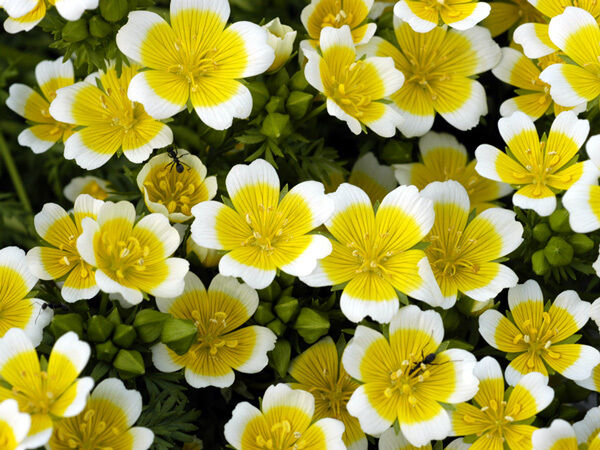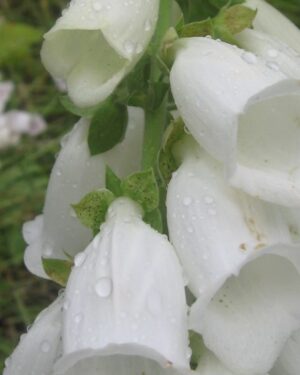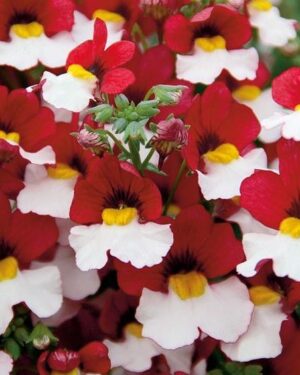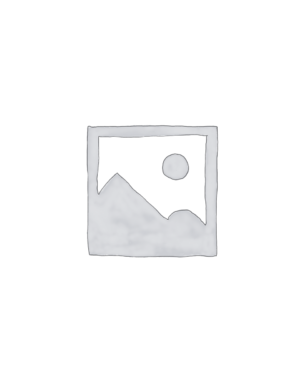Description
Limnanthes Douglasii Poached Egg Mix
Limnanthes Douglasii Poached Egg Mix is a superb free flowering ground cover annual. It produces masses of saucer-shaped yellow flowers edged with white on bright green foliage. Superb in the rock garden and fine for edgings. Height 6″. Easy to grow.
Cultivation Advice
- Choose a location that receives full sun to partial shade. Limnanthes grows well in both settings, though some protection from intense afternoon sun can be beneficial in hotter climates.
- Opt for well-draining soil enriched with organic matter. Amending the soil with compost or well-rotted organic material before planting can enhance soil texture and fertility.
- Plant seeds directly into the soil in early spring after the last frost date or in the fall in milder climates. Sow seeds thinly and cover them lightly with soil.
- Space plants around 6 to 8 inches (15 to 20 cm) apart to allow for their spreading growth habit. Proper spacing encourages good airflow and prevents overcrowding.
- Maintain consistently moist soil, especially during the germination period and in dry spells. Water gently to avoid disturbing newly planted seeds.
- Apply a layer of mulch to help retain soil moisture, regulate temperature, and suppress weed growth. Organic mulches like straw or wood chips work well.
- Limnanthes generally doesn’t require heavy fertilization. However, a balanced, water-soluble fertilizer applied sparingly can support healthy growth.
- Regularly deadhead spent flowers to prolong blooming. This encourages continuous flowering and prevents the plant from setting seed too early.
- Protect young seedlings from strong winds or heavy rain. Consider using row covers or temporary shelters during extreme weather.
- Limnanthes is relatively pest-resistant but monitor for aphids or slugs. Address any issues promptly with organic pest control methods.
- In mild climates, Limnanthes might overwinter and self-seed. Leaving some seed heads can naturally drop seeds for the following year’s growth.
- Regularly monitor the plants for signs of stress, pests, or nutrient deficiencies. Adjust watering and care practices based on their needs.
- Pair Limnanthes with taller plants or ornamental grasses to create visual interest and texture in your garden. It can serve as a lovely border or ground cover.
- The Poached Egg Plant is known to attract beneficial insects like hoverflies and predatory insects, aiding in natural pest control. This feature can contribute to a healthier garden ecosystem.
- While it prefers consistently moist soil, be cautious not to overwater. Aim for a balance to keep the soil evenly moist without waterlogging, especially during the germination phase.
- Trim back any leggy growth or spent flowers regularly to encourage new growth and prolonged blooming throughout the growing season.
- Utilize Limnanthes as an edging plant along garden beds or pathways. Its low-growing nature makes it ideal for framing and defining spaces in the garden.
- Limnanthes douglasii can be an excellent teaching tool in educational settings. It offers an opportunity to observe plant life cycles and attract pollinators for educational purposes.
- Allow some seed heads to fully mature and dry on the plant. Harvest the seeds for future plantings or share them with fellow gardeners.
- While Limnanthes is adaptable, it tends to thrive in slightly acidic to neutral soil. Ensuring suitable soil pH can support its healthy growth.
- Consider planting Limnanthes in containers or pots for smaller gardens or balconies. Ensure the containers have good drainage for optimal growth.









Reviews
There are no reviews yet.